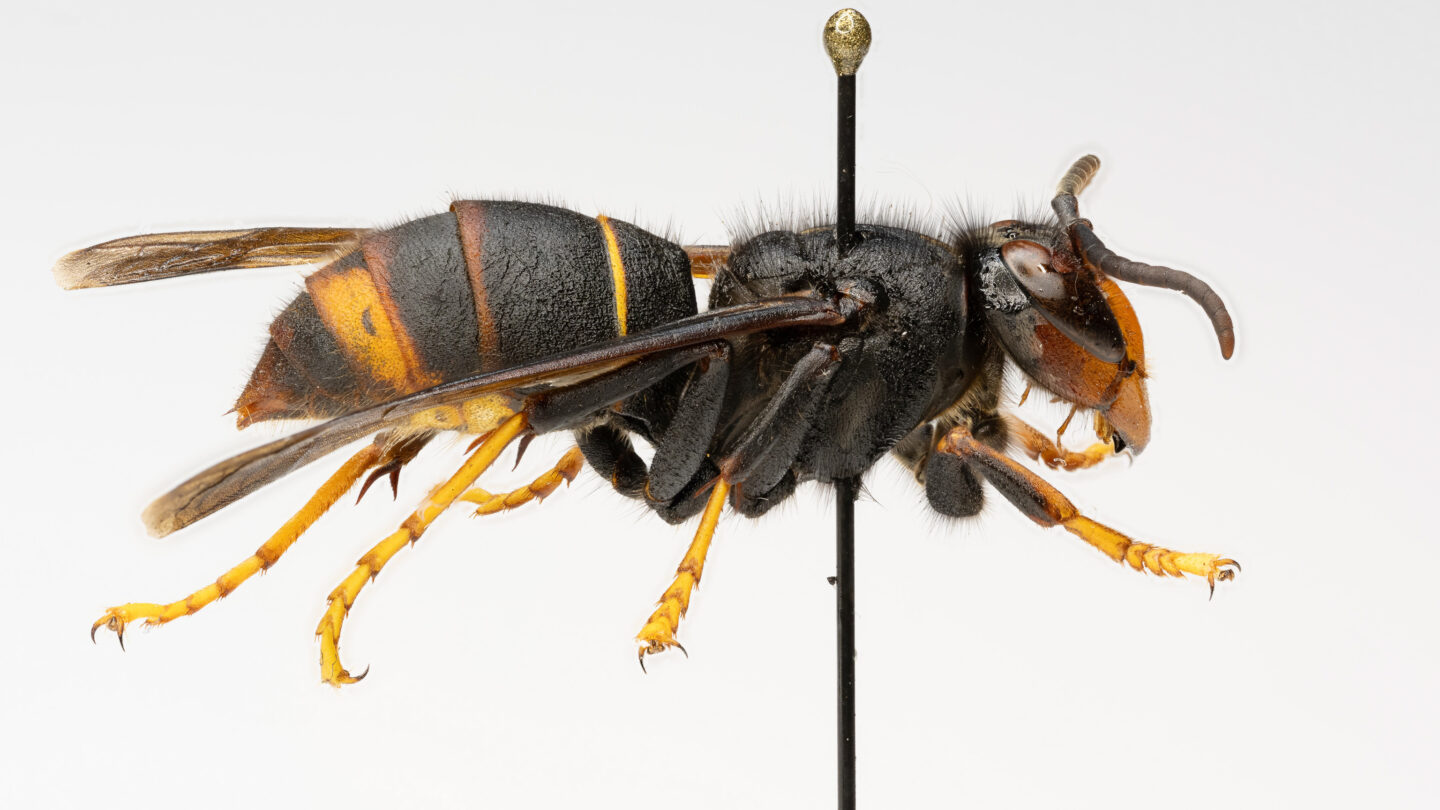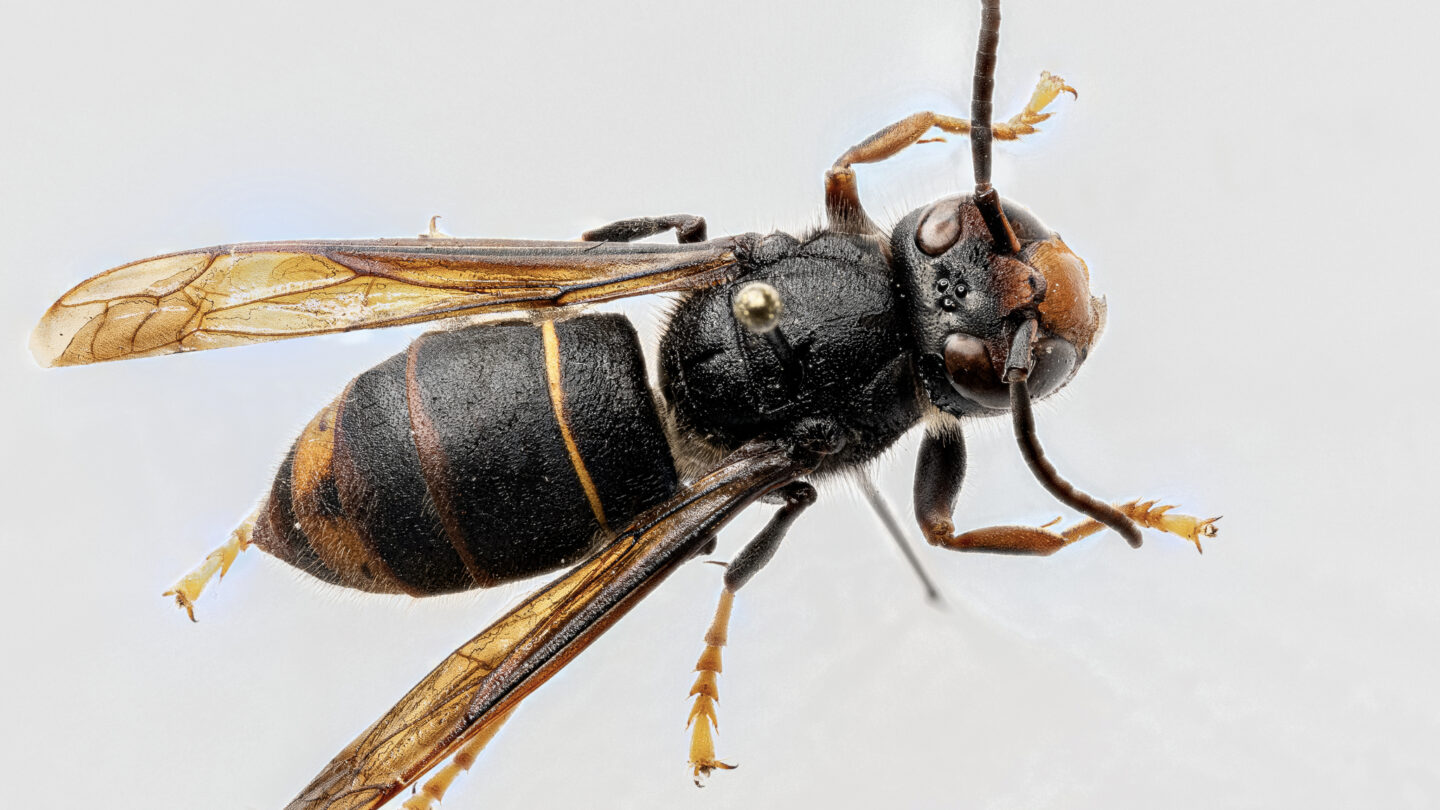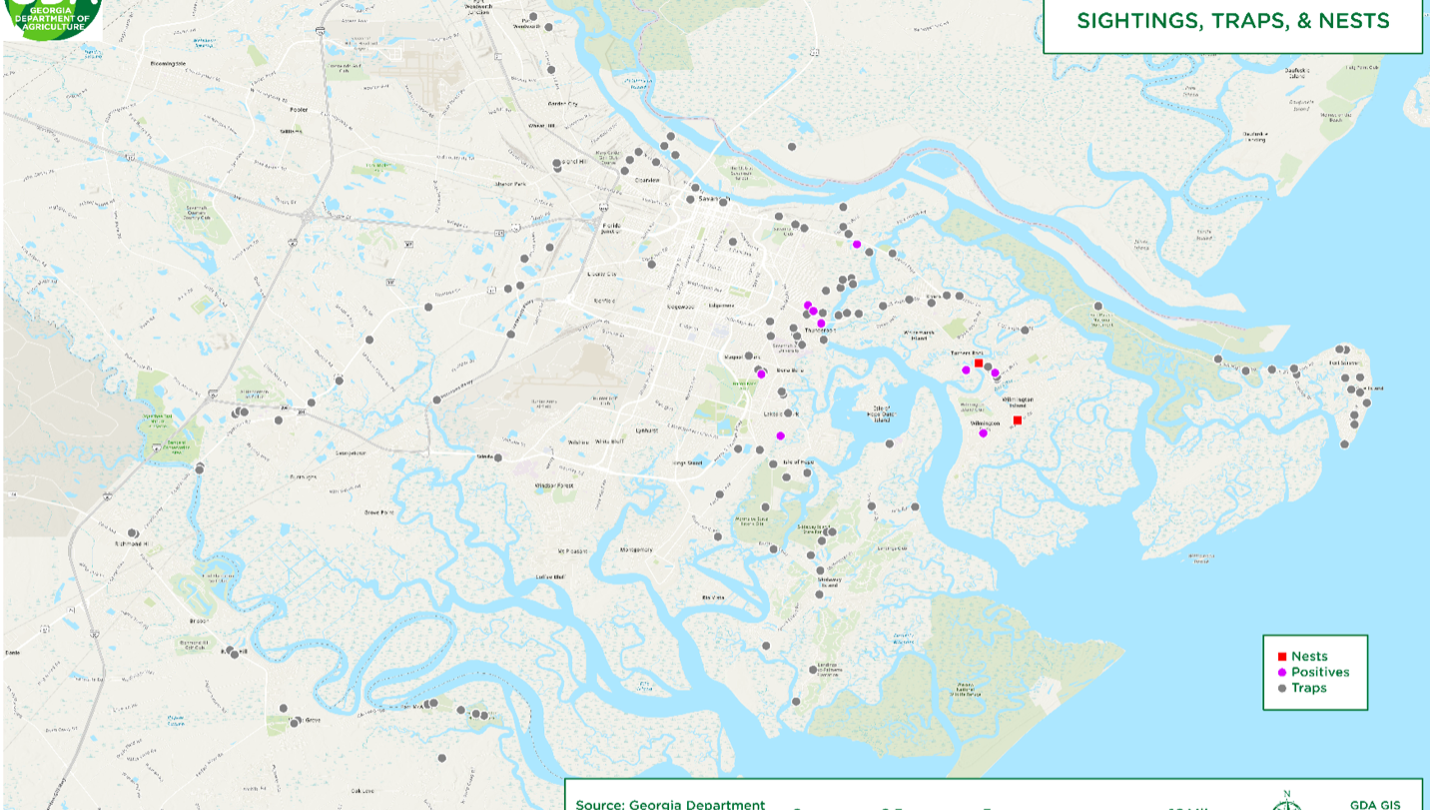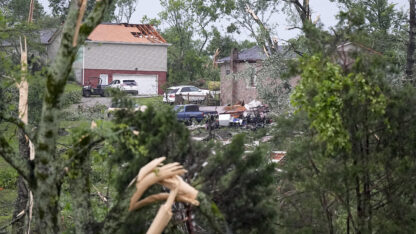Inside the hunt to trace Georgia's invasive hornets

Georgia’s insect experts are using some unexpected means to track down the state’s newest winged invader – the yellow-legged hornet.
For years, insect experts have been warning beekeepers to watch out for invasive species like the yellow-legged hornet, and their vigilance paid off in August when a beekeeper called in the first one ever found in the U.S. Since then, the Georgia Department of Agriculture and partners at the University of Georgia, along with local beekeepers, have found and eradicated two nests. They haven’t found any more yet.
The hornets are a big management concern for the state because they are voracious predators that kill pollinators, including honeybees. In the fall, they’re gearing up to produce queens that will overwinter and start reproducing in the spring. To do that, they need protein.
“That’s why they’re going after the honey bees,” said Tim Davis, the University of Georgia Agricultural Extension director and UGA Coastal Botanical Gardens director in Chatham County, where the first yellow-legged hornets were found on Wilmington Island.
“They actually take the abdomen off, cut the head off, cut the legs off, pick the thorax because that’s where all the wing muscles are, and they take that back (to their nest),” Davis said.
He said the hornets are native to Asia and have spread to other places like Europe. There, productivity in hives dipped 30% after the hornet’s arrival, and in 5% of cases, the hornets decimated a native pollinator’s hive altogether. If widespread, they could have large impacts on Georgia’s top industry: agriculture.

Tracking, mapping and eradication
The hornet-fighting group’s next step is figuring out how to follow the remaining hornets and see if they lead back to another. Davis said an on-the-ground team, mostly comprised of Georgia Department of Agriculture (GDA) employees, is following up on sighting reports, trapping hornets and marking them in a catch-and-release monitoring program.
GDA’s employees are fielding reports from citizens of suspected sightings and helping to weed out the commonly mistaken, similar-looking critters such as paper wasps. While popular messaging about invasive insects — like the infamous spotted lanternfly — usually encourages people to kill the insects on sight, Davis emphasized that no one should kill the yellow-legged hornets.
Each hornet is one of thousands in its nest and represents an opportunity to track and follow the insect to the bigger group. If people kill the individuals, it makes it harder for researchers to follow them back to home base.
Right now, Davis said GDA is using colored markings on the hornets to identify them. In the future, he said the state is looking to use tiny tracking devices to follow the hornets. They’d been lent some in the past, but the teensy batteries weren’t working correctly.
In the meantime, researchers are looking not only to follow where the hornets are going but also at evidence of where they’ve been to detect patterns.

Map of yellow-legged hornet identifications and traps
DNA leads to crack the case
Researchers at UGA, like Dr. Lewis Bartlett and partners at Clemson and the University of Florida, are using lean proteins like catfish filets to bait hornets and test for their DNA to collect critical data on the hornets’ whereabouts. It’s not a novel method for entomologists to use, but Bartlett said it’s another tool for the researchers to detect the yellow-legged hornets, and at this point, locating them as early as possible is the main goal.
Bartlett said this method capitalizes on where in the life cycle the hornets are right now. During the fall, they go after protein to create new queens that will reproduce in the spring. At other times of the year, researchers may use more carb or sugar-based baits. Trained volunteers, often from beekeeping organizations, place the meat on a stand outside and regularly change out the meat and swab the samples.
“You essentially take a swab, not too dissimilar for if you maybe have a suspicious throat infection, or when you take your laptop or a big hair dryer through TSA, and they swab it to see if there’s any sort of thing suspicious on it,” Bartlett said. “We can do that in affected areas to try and pick up deposited DNA left by these hornets in a very kind of forensic, CSI-style.”
Using this style of DNA confirmation, Bartlett said the researchers are able to get a better image of where the hornets are flying and where they are stopping along their routes. Better insights into their patterns can help triangulate the location of a nest and also indicate in which directions they may be spreading.
He hopes to have a more expansive testing network in the future. Since the yellow-legged hornets only recently arrived, the organization of monitoring networks, GDA employees, volunteers and meat sampling have sprung up in just a matter of weeks, meaning there’s room for growth and improvement with more time.
According to Davis, researchers have analyzed the two nests that have already been eradicated and have not found evidence that the hornets have started making queens. At this time in Europe, they usually have already started.
“We don’t know when the reproductive stage is going to happen and when dispersal is going to happen — so it is a race against the clock,” Davis said. It’s a small window of opportunity, and it’s quickly closing because if they can kill the hornets before they make queens that will make babies in the spring, they’ll be far ahead in totally eradicating the species in the U.S.
To report suspected sightings of the hornets, contact the Georgia Department of Agriculture at its website or email questions or concerns to yellow.legged.hornet@agr.georgia.gov.








